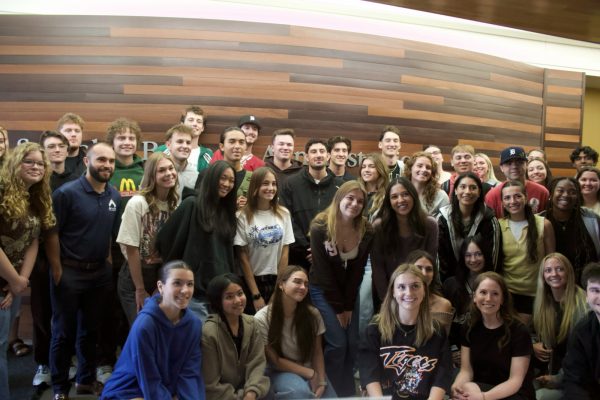OU alumni wins recognition as science adviser for Gravity, Eureka
Jaime Paglia, co-creator of “Eureka,” wanted to know how fast a human had to run to walk on water. He called Dr. Kevin Grazier, Ph.D.
“Give me 25 minutes,” Grazier told Paglia. He called back and told Paglia that the number was about 10 to the 46th power mph. He told Paglia that, before he reached that speed, the skin would fly off his bones and he’d burst into flames.
Paglia asked him what speed would be plausible and not totally enrage scientists. Grazier sighed.
“648 miles per hour.”
While Alfonso Cuarón was accepting the Oscar for Best Director, “Gravity” was old news for Kevin Grazier.
The OU alum had finished his work as science advisor on the movie almost four years before. Grazier, who works more in television than film, also worked with Jaime Paglia, co-creator of former Syfy series “Eureka.”
One episode involved blink, a fictional eyedrop that sends your brain into warp speed, Paglia says. An ordinary man on blink resembles Grazier as is.
“He’s one of the nicest guys in the world. He’s got boundless energy,” Paglia says.
“His brain works faster than his mouth can keep up with, so he talks incredibly fast.”
“The line is when science crosses into magic,” Grazier says.
This is the job:
You meet with the writers, and they ask you: Is this plausible?
The screenwriter creates the “Oh, wow!” moments. The science advisor minimizes the “Oh, please!” ones.
The “Oh, wow!” moments let the viewer lose him or herself in the show. When you say “Oh, please!”, “You’re a person sitting amongst four walls in the 21th century watching TV, saying, “Nah, no, I don’t buy that,’” says Grazier.
The “Oh, please!” moments are caused by technical gaps that could have been fixed without harming the story. Grazier catches these and makes the story appear grounded.
However, don’t expect everything to be perfect.
“Science fiction is a genre predicated on one main scientific inaccuracy,” Grazier says. This is the gimme, the one thing the audience must run with.
The science advisor is not a copy editor, Grazier says. He doesn’t have absolute say over the final cut.
But, don’t think the science advisor is shunned.
“If the showrunner is bringing a science advisor aboard in the first place, they already have a commitment to getting the science right,” Grazier says.
Grazier got his start in Hollywood in grad school when he co-wrote a script for “Star Trek: Voyager” and sent it to Paramount. Out of 3,000 scripts, Paramount chose about 10 per year. He got the call.
He pitched stories and met Bryan Fuller, now the showrunner of NBC’s “Hannibal.”
His break was an interview for science advisor on the reimagined “Battlestar Galactica.”
“It was a five minute interview and I left there with the series bible and the first two episodes,” Grazier says.
Because the work was part-time, he could continue his work at NASA’s Jet Propulsion Lab, where he worked for 15 years.
In Hollywood, it’s not always what you know, Grazier says. The people you work well with are the people you stick with.
He got referred to the writers of Eureka, and his Hollywood career took off. Once you get a few good shows under your belt, you get word of mouth, Grazier says.
Grazier graduated from Oakland in 1987. He transferred from Purdue University and earned his second degree, a bachelor’s in physics.
Grazier thinks of how much Oakland is growing, and how much cash is flowing into it.
“What? Did they plant a seed and another building popped up?” he says.
Grazier is a Detroit expatriate. He frequents a coney island on Sunset Blvd. in West Hollywood.
You can find Grazier every year at San Diego Comic-Con on the “Science of Science Fiction” panel. He is also writing Hollyweird Science with Stephen Cass.
On his morning commute, Paglia called Grazier and asked if if there was any way the Earth’s magnetic poles could flip at once.
“Oh, you’re talking about Nemesis,” Grazier told Paglia.
Paglia had his episode before he even parked his car.





